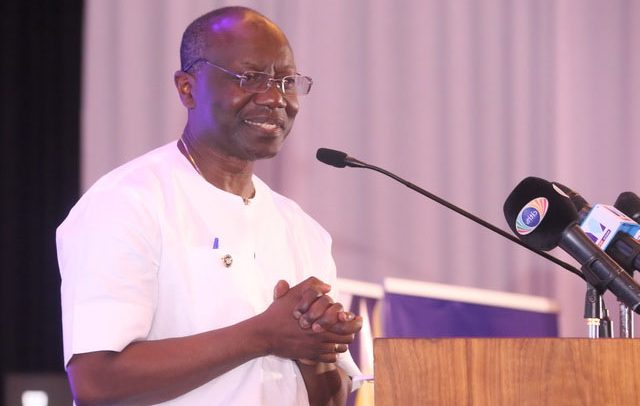Ken Ofori-Atta
THE ECONOMIC Intelligence Unit (EIU) has projected that Ghana’s economy will recover, driven by strong oil, gold, and agricultural output, followed by an easing of real GDP growth in 2023-24, as oil output stabilises and manganese output declines, throughout this year.
In its latest report, the research and analysis division of the Economist Group, said in 2025-2026, the economy will benefit from the expected coming on-stream of the Pecan oilfield, and from higher gold and cocoa output.
It continued that the country’s economy relies heavily on output and exports from the hydrocarbons, gold, and cocoa sub-sectors, which exposes it in part to global trade headwinds, adding “new oil fields will take time to develop and bring on stream.”
The EIU stated that agriculture and services also support the economy, and added that the ruling New Patriotic Party (NPP) would seek to limit the fallout from the coronavirus pandemic.
It pointed out that alongside continued attempts to soften the blow of the pandemic, government should prioritise strengthening agro-processing and food security (via promotion of import substitution), and supporting diversified export growth and foreign direct investment, in line with its long-term Ghana Beyond Aid development strategy.
It, however, said “the cedi will remain prone to periods of volatility, given its dependence on commodity prices and evolving trends in investor sentiments towards emerging markets. The currency will weaken to GH¢9.88:US$1 in 2026, from an average of GH¢5.80:US$1 in 2021.”
The EIU noted that Ghana has a strong democracy and is politically stable by regional standards, and that “these factors, alongside a growing middle class and nascent manufacturing sector, will help to establish the country as a regional hub for machinery-making and agricultural processing.”
It also estimated that the country’s real GDP grew by 5% in 2021, given a strengthening of global and domestic conditions, such growth will have been fairly broad-based.
“Real GDP growth will rise to 5.2% in 2022; we expect gold production and processing to strengthen in 2022, driven by the recommissioning of the Bibiani gold mine in western Ghana, with first gold pour expected in the second half of 2022.
“The mine’s output capacity is expected to be 190,000 ounces in the first 12 months of operation, with a planned ramp-up beyond that, to 240,000 ounces annually,” it said.
The EIU asserted that output would also be supported by government’s efforts to curtail illegal mining, which will boost formal sector activity.
“Oil output will rise marginally in 2022; that the rise in volumes will be only limited, despite spikes in oil prices due to the Russia-Ukraine war, reflects Ghana’s limited production capacity. We expect growth to moderate in 2023-24, to an average of 4.4%, before gradually picking up again, to 4.8% on average in 2025-26,” the report pinned.
It said constrained oil sector growth will keep annual growth below pre-pandemic rates of 6-8%. “Government is keen to develop the hydrocarbons sector, but we expect oil production expansion to be limited at existing fields (including Jubilee and Tweneboa Enyenra Ntomme), and development work at new sites will be slow.”
“We expect a final investment decision (FID) on Pecan, an offshore oilfield (managed by Aker Energy, a Norwegian firm), to be reached by end-2022, but production is unlikely until 2025. Oil production volumes are therefore expected to remain below 2019 levels in 2022-24, then rise briskly from end‑2025, assuming that Pecan comes on stream.
“Output from the gold sector will increase further from 2023, as the Ahafo North mine begins production. Manganese output will dip in 2023-34, then rise again in 2025-26, mirroring movements in global demand,” EIU report stated.
BY Ernest Kofi Adu

